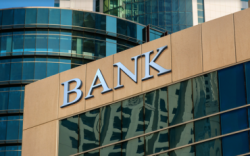Traditional banking and internet banking are two separate types of banking. These are the portals through which bank customers can withdraw money or conduct banking operations. The most essential aspect of online banking is that it is always available, allowing you to manage your accounts from anywhere at any time. With the help of smartphone apps, you can pay your bills and check your bank balance. Some online banks even allow customers to trace their payments by sending them a message. Traditional banking is concerned with visiting a physical location to gain access to your account. Although some traditional banks allow you to access your accounts online, you may still need to visit the bank to verify your identity or submit documents.
Traditional Banks
The most significant distinction between traditional banking and online banking is the existence of a physical location. A traditional bank has national and regional headquarters, as well as branches throughout the countries in which it operates. Many conventional banks have their own ATMs with their own logos. Smaller conventional banks may band together to run a large number of branches in order to cut expenses. Traditional banks were first preferred for their convenience and face-to-face customer service, as well as their local branches.
According to a 2016 Global Consumer Banking Survey, 60 percent of customers in 32 countries stated they would prefer to visit a physical branch or speak with a live person to buy a new financial product or get advice. Traditional banks may appear more trustworthy than banks that do not have physical locations due to their emphasis on in-person client service. This is especially true when a customer opens a new account.
Traditional banking is a financial institution dedicated to the management of money that its clients deposit in the bank’s custody, while the bank, on the other hand, uses that money to provide loans to individuals or businesses (charging them interest).
Traditional banking is resistant to cyber threats. Many cases involving e-banking have recently surfaced. Traditional banking is now more secure than e-banking, which is a tempting target for hackers.
Traditional Banking consists of 3 components:
- Capital
- Deposits
- Loans
#1. Capital
is traditional banking’s main pillar. All banks are built on a capital base. This capital money is then wisely transformed into loans, resulting in job creation and economic growth.
#2. Deposits
Once the money has been invested, it is backed by the accumulation of deposits, which serve as individual and commercial savings and liquid cash reserves. The Federal Deposit Insurance Corporation of the United States ensures deposits of up to $250,000. (FDIC).
#3. Loans
are the sum of capital and FDIC-insured deposits that serve as a basis for determining how much money can be released in loans.
What are the Types of Bank Accounts?
The typical consumer perspective of banks is that they are either locations to keep money or somewhere to go to borrow money. The following is a list of the various bank accounts that may be available to you:
- Checking accounts
- Savings accounts
- CDs
- Money market accounts
- Credit card accounts
- Auto loans
- Mortgage loans
- Student loans
Significance of Traditional Banks
Commercial banks play a vital role in the economy. They not only provide a necessary service to consumers. But they also assist in the creation of capital and liquidity in the market.
They maintain liquidity by borrowing monies from their customers’ accounts and lending them out to others. Commercial banks help to create credit, which leads to increased production, employment, and consumer spending, all of which help to grow the economy.
As a result, commercial banks are extensively regulated by their country’s or region’s central bank. Central banks, for example, impose reserve requirements on commercial banks. This means that banks must maintain a specific percentage of their consumer deposits at the central bank as a safety net in case the general public withdraws funds in a rush.
What is Online Banking?
Modern consumers place a high value on digital banking. According to the same survey, 66 percent of customers stated a strong digital presence was a key feature of their preferred bank. The majority of Europeans are demonstrating this; according to Eurostat statistics, 59 percent of European internet users bank online.
Most traditional banks have integrated online banking into their services to stay competitive and assure consumer satisfaction. Customers may check their balances, transfer money, create new accounts, and even apply for a mortgage through online portals, which are accessible 24 hours a day, seven days a week, unlike traditional branches. Phone calls and visits to a bank office are being replaced by online customer service, which includes e-mail, chat, and video calls.
In addition to the existing array of online banking services, solutions such as Video banking app has emerged to further enhance customer experiences and convenience.
Mobile banking has also grown in popularity, with one report claiming that 47% of worldwide customers used it in 2016. Banking apps are also becoming increasingly popular, allowing customers to make quick digital payments in stores, at events, and on the internet.
Of course, all of this ease comes at a cost. Because internet banking opens up a new outlet for criminals, when a consumer accesses their financial information over an unprotected network, anyone could listen in and access the log-in credentials or other information. Phishing emails may persuade the less tech-savvy to click on links that look to come from the bank itself. Banks that provide online banking services can secure their own websites and apps. But they must also educate their consumers on how to do it properly.
Main Differences Between the Internet and Traditional Banking
- The main difference is that with internet banking, you may access your account, make payments, and reconcile statements using your computer, whereas with traditional banking. You must visit your local branch or office to manage your account.
- Traditional banks have physical locations where customers can be served. However, Internet banks do not have physical locations because services are given online.
- Traditional banking clients who go to foreign countries are unable to closely monitor their financial transactions. Whereas internet banking users can monitor their financial transactions from anywhere in the world.
- Clients in traditional banking must spend money to visit their separate branches. However, customers in internet banking can avoid these fees.
- Customers do not suffer e-security dangers in conventional banking. But traditional banking security is one of the issues customers confront when accessing accounts via the internet. As online banking is a tempting target for hackers.
Why Traditional Banks are Better Than Digital Banks?
Traditional banking may not offer the same conveniences as digital banking; however, traditional banking does offer comprehensive financial services; which means that you may most likely receive all you require in one location. In addition, if you place the most emphasis on personalized, in-person assistance from customer service representatives, you could be better off with a traditional bank.
Where is the Best Place to Bank?
The financial institution that provides you with goods and services that are tailored to your specific requirements is going to be the most beneficial for you to do business with. If, for instance, you require a checking account that does not incur monthly fees or a savings account that provides an annual percentage yield that is significantly higher than that offered by a regular bank, you can opt for an online bank rather than a traditional bank. If, on the other hand, you require or simply prefer access to branch banking, you can decide to go with a traditional bank instead.
Which Type of Bank Account is Best for Everyday Transactions?
A checking account is intended to be used for routine monetary dealings, such as the depositing of wages, the payment of bills, the transfer of money, and the making of purchases using a debit card that is linked to the account. Checking accounts are able to provide you with freedom in terms of the management and accessibility of your funds; however, it is essential to select an account that provides the finest combination of features and cheap fees.
How Do Central Banks Govern the Banking Industry?
The supply of money is regulated and managed by central banks, which also oversee the nation’s monetary system. For instance, when the economy is on the edge of overheating, the central bank may choose to boost interest rates in order to slow down borrowing and spending. This is done to prevent the economy from going into an even deeper recession. If on the other side, the economy is performing poorly, the central bank may choose to cut interest rates in order to stimulate spending and encourage borrowing.
How Do Investment Banks Make Money?
Investment banks have the ability to generate revenue through the collection of service fees as well as commissions earned on the sale of particular products. For instance, a commission could be earned by an investing business for the sale of a certain kind of mutual fund to individual investors.
Bank Credit Cards
Another important source of funding is credit cards. Credit cards are basically revolving lines of credit that can be used at any time. Commercial banks sell them on behalf of private card issuers.
After a transaction, money is transmitted between the shopper’s bank and the merchant’s bank using proprietary networks controlled by Visa and MasterCard. Credit card lending is not undertaken by all institutions because default rates are generally substantially higher than in mortgage lending or other types of secured lending.
Credit card lending, on the other hand, generates lucrative fees for banks interchange fees charged to merchants. For accepting the card and entering into the transaction, late-payment fees, currency exchange, over-the-limit, and other fees for the cardholder. As well as higher rates on credit card balances carried from month to month.
What Are the Advantages of a Bank Savings Account?
By opening a savings account, you can get the most out of the money you maintain in a bank or credit union. While some checking accounts do pay interest, the great majority do not, and those that do pay a pittance.
A savings account allows anyone who has extra money in the bank than they need to fund their checking account’s daily transactions to shift that money to an account that pays a competitive interest rate.
Another advantage of creating a savings account is that it can assist you in organizing your finances based on your needs and objectives. For example, you can use a savings account to store money for an emergency fund or to save for a significant financial objective. Such as a home purchase or a future vacation. You can readily distinguish these monies from what’s accessible in your checking account for monthly expenses and day-to-day expenditures by keeping them separate in a savings account.
How Do Banks Make Money on Savings Accounts?
Banks provide savings accounts to help them achieve their profit goals. Because making loans to customers and businesses and collecting interest payments is one of the key ways a bank produces money, they need a steady supply of capital to do so.
One way banks get the capital they need to lend money to other customers is to provide checking, savings, money market, and certificate of deposit accounts. Because the interest rates banks pay on deposit accounts are lower than the rates they can collect on loans. It’s also a way for them to boost their profit margins. As previously stated, most checking accounts pay no interest. In November 2021, the nationwide average interest for savings accounts was merely 0.06 percent. 1 When a bank may offer a 5 percent or 6 percent vehicle loan or a 15 percent to 25% credit card rate. It earns money on the difference between the rate of interest paid and the rate of interest earned.
Can I Open a Savings Account Online?
Consumers used to create a savings account at the same bank where they had their main checking account. This is still the situation for many Americans. Personal banking alternatives have expanded with the introduction of the Internet, and the most rewarding savings accounts are now available online.
In two ways, this is correct. To begin with, traditional brick-and-mortar banks now all offer internet banking capabilities, and almost all of them allow you to open an account online. As a result, rather than visiting a bank branch. You may usually open a new saving account from the comfort of your own home.
The second trend is the significant growth of Internet-only banks. These are FDIC-insured banks that provide the same level of safety for your money as traditional physical banks. An Internet bank, on the other hand, conducts all of its transactions online. With no physical branches to construct, staff, run or maintain. Online banks benefit from cost reductions by not having to maintain a physical presence in one or more areas. Allowing them to offer higher deposit rates than traditional banks can.
Which Bank Has the Highest Rate on a Savings Account?
Banks and credit unions are free to vary their savings account rates whenever it suits their needs. Thus the country’s leading savings account rate could change at any time. However, as you can see from our top-rated rankings, many of the finest APYs are offered by Internet-only banks. Some internet branches of traditional banks. As well as a few credit unions with broad, nationwide membership eligibility, round out the top competitors.
You may also notice the lack of some of the most well-known bank names. Three of the country’s four largest banks by assets. Chase Bank, Bank of America, and Wells Fargo, all offer savings account rates well below the national average. They don’t compete actively for deposit funds. Because their business model and scale allow them to get sufficient funding from other sources.
Only Citibank offers a savings account with a competitive interest rate among the big four banks. Even Citibank, however, does not make the cut because many smaller, less well-known banks and credit unions offer better rates.
What you can expect from our rankings is that they are the absolute best savings account rates available in the country from institutions that serve consumers all over the country. We don’t rank them based on advertising or sponsorship relationships, or any other criterion besides APY, countrywide availability, and a $25,000 minimum deposit.
What is an example of a Traditional Banking Service Channel?
Automated Teller Machines, which enable clients to access the services 24 hours a day, 7 days a week using a debit card. This is by far the most common method of payment that may be used in the modern world. By means of a retail branch, which is a physical location where consumers may go in person to speak with members of the bank’s staff and get their questions answered.
Why Traditional Banks are Better than Digital Banks?
Traditional banking may not offer the same conveniences as digital banking; however, traditional banking does offer comprehensive banking services, which means that you may most likely receive all you require in one location. In addition, if you place the most emphasis on personalized, in-person assistance from customer service representatives, you could be better off with a traditional bank.
Conclusion
Both Internet Banking and Traditional Banking have unique features that are vital in allowing consumers to access and manage their accounts. Traditional banking serves customers physically, so it takes a long time to complete bank transactions. Such as checking bank balances and transferring money from one account to another. Internet banking, on the other hand, does not serve customers physically because services are provided online, making it more efficient.
FAQs
What are 2 characteristics of a traditional bank?
Our concept of traditional banking is based on four hallmark characteristics of this business model: Relationship loans, core deposit funding, revenue streams from traditional banking products and services, and physical bank branches.
Why are traditional banks important?
Making working-capital loans to businesses that don’t have access to public debt markets thus provides a public benefit that can justify the money-creation privilege granted to banks. This means that “traditional banking” is about much more than careful lending with a personal touch.
How does a traditional bank work?
A traditional bank has a headquarters, as well as regional HQs, with branches located across the countries in which it operates. Customers have reduced access to their own banking information outside of business hours; when traveling, they may not be able to find a branch or ATM without high fees.
{
“@context”: “https://schema.org”,
“@type”: “FAQPage”,
“mainEntity”: [
{
“@type”: “Question”,
“name”: “What are 2 characteristics of a traditional bank?”,
“acceptedAnswer”: {
“@type”: “Answer”,
“text”: “
Our concept of traditional banking is based on four hallmark characteristics of this business model: Relationship loans, core deposit funding, revenue streams from traditional banking products and services, and physical bank branches.
“
}
}
, {
“@type”: “Question”,
“name”: “Why are traditional banks important?”,
“acceptedAnswer”: {
“@type”: “Answer”,
“text”: “
Making working-capital loans to businesses that don’t have access to public debt markets thus provides a public benefit that can justify the money-creation privilege granted to banks. This means that \”traditional banking\” is about much more than careful lending with a personal touch.
“
}
}
, {
“@type”: “Question”,
“name”: “How does a traditional bank work?”,
“acceptedAnswer”: {
“@type”: “Answer”,
“text”: “
A traditional bank has a headquarters, as well as regional HQs, with branches located across the countries in which it operates. Customers have reduced access to their own banking information outside of business hours; when traveling, they may not be able to find a branch or ATM without high fees.
“
}
}
]
}






